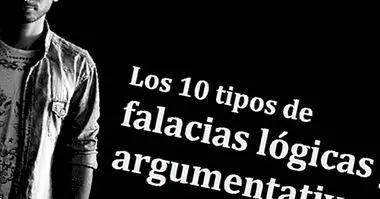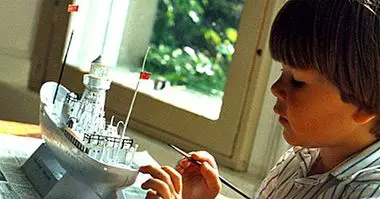8 creative exercises to stimulate your mind
Sometimes it's hard for the muses to bring us the dose of inspiration we need, but with the right strategies we can help our mind receive the influence of creativity .
And it would be ironic that creativity, which is the ability to connect ideas with each other in an original and novel way according to what we experience at each moment, can not be enhanced through the experiences to which we are subjected.
- Maybe you're interested: "The 14 keys to enhance creativity"
Exercises to stimulate creativity
Below you can see a selection of creative exercises to make your way of thinking more flexible and spontaneous. You can choose the ones that you like the most depending on what your goals are.
1. Eraser technique
This technique is widely used by writers and advertising creatives, as it helps us to deconstruct an idea to reveal its most basic components and build again from there.
To carry it out, we will write down on a sheet of paper all the ideas that we create that make up the subject to be discussed, we weigh in the knowledge "gaps" that appear among that mass of information, document more about what is necessary and, starting from there look for connections between those ideas that we have been writing down separately.
2. Good bad interesting
This method was devised by the psychologist Edward de Bono , famous for being the first to theorize about the concept of lateral thinking .
It consists of selecting the idea on which we want to work and thinking something good, something bad and something interesting about that element. Reviewing the amount of ideas we collect in each of these three columns will help us know if we are experiencing a bias when analyzing that idea.
3. Group sketching
This exercise serves to see the same idea from different angles thanks to the group action.
To do this, we must meet with a group and begin to draw each on a sheet the beginning of an idea. Then, all the folios change hands and each person continues the drawing initiated by the companion . This is developing over 4 to 9 steps like this.
4. SCAMPER
SCAMPER is an acronym created to make our texts or ideas go through a series of filters that will help us to flex our ideas about what we have in hand:
Substitute: What elements can I substitute for others that are not present in the original concept?
Combine: How can I combine ideas? What happens if we put this together with this other?
Adapt: What can I modify to better match the set?
Magnify: What elements deserve more attention?
Put to other uses: What elements can be used more efficiently?
Eliminate: What elements could disappear without affecting the whole?
Reverse: What elements can be restated without causing serious problems?
5. Forced connections
First of all we note in two different columns a series of concepts with no apparent relation to each other, numbered. Then, we choose an element of each column by chance (for example, with the help of numbers and dice) and we play to make them related to each other through an idea that we will have to create , no matter how crazy it is. It is one of the most fun creative exercises.
6. The problem of sailing
This problem was created by the psychologist Karl Duncker to observe the ability of people when using conventional objects in novel ways. Some people find this a test so difficult that it can cause some anxiety.
To perform the test, a wax candle, a matchbox (with matches) and a box of thumbtacks (also filled) are used. The objective is make the candle fixed to a wall and can remain lit without the wax dripping to the ground. If you want to know the solution, click here.
7. The six hats
This technique was also developed by Edward Bono, and is to analyze a problem from six different perspectives : of logic, of optimism, of the devil's lawyer, of emotion, of creativity and of general direction. So, we must put ourselves in the shoes of these six "flat characters" just like an actor would.
8. Questioning everything
This exercise is very simple: it consists of writing down all the ideas that make up a concept and start wondering how each of them could be compromised. In this way unfounded beliefs are identified or else we get to funny and crazy ideas about the way in which thought has to be contorted to deny very basic and obvious ideas. It can be especially useful in the field of advertising , where lateral thinking is very important.



















